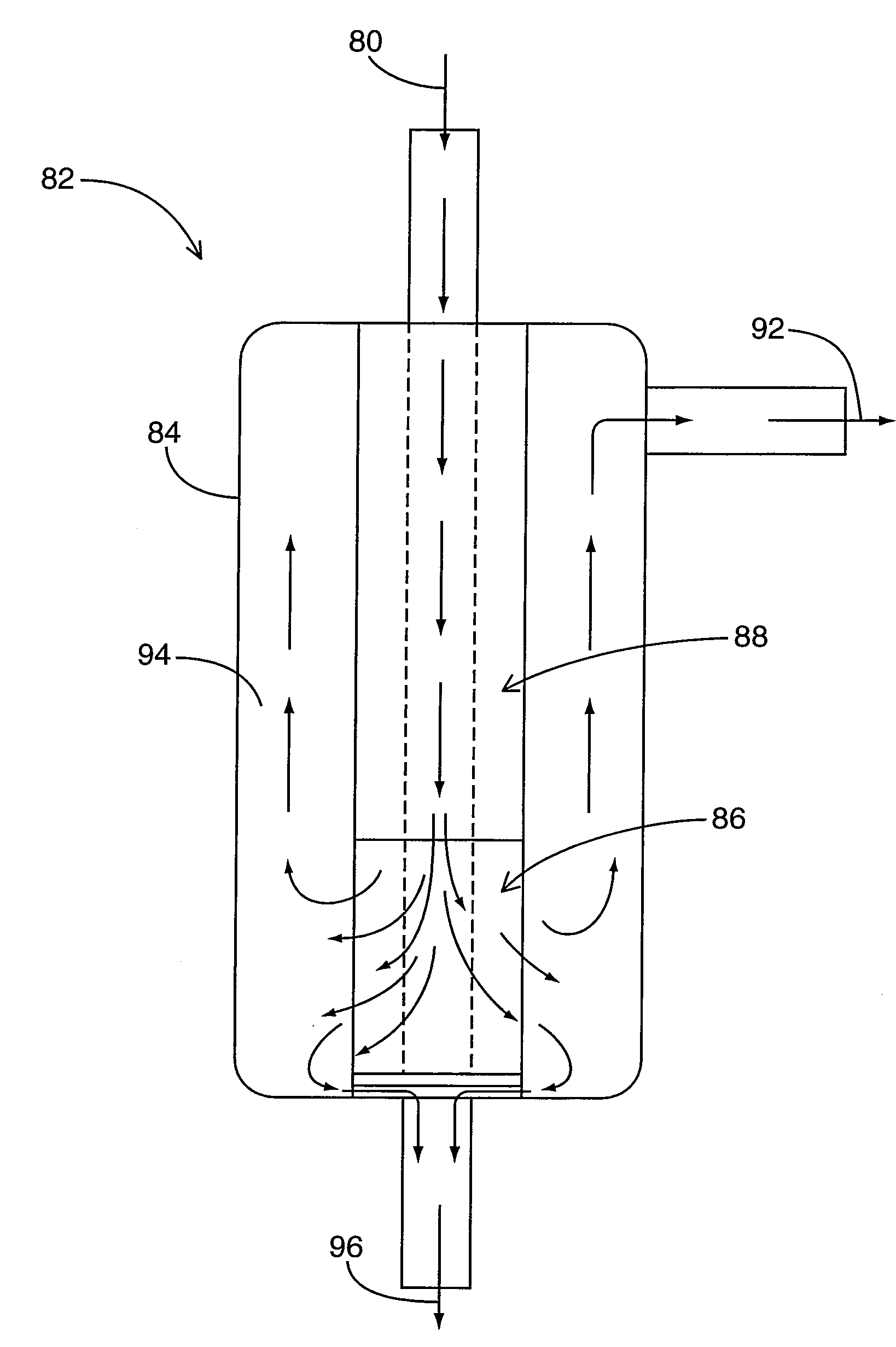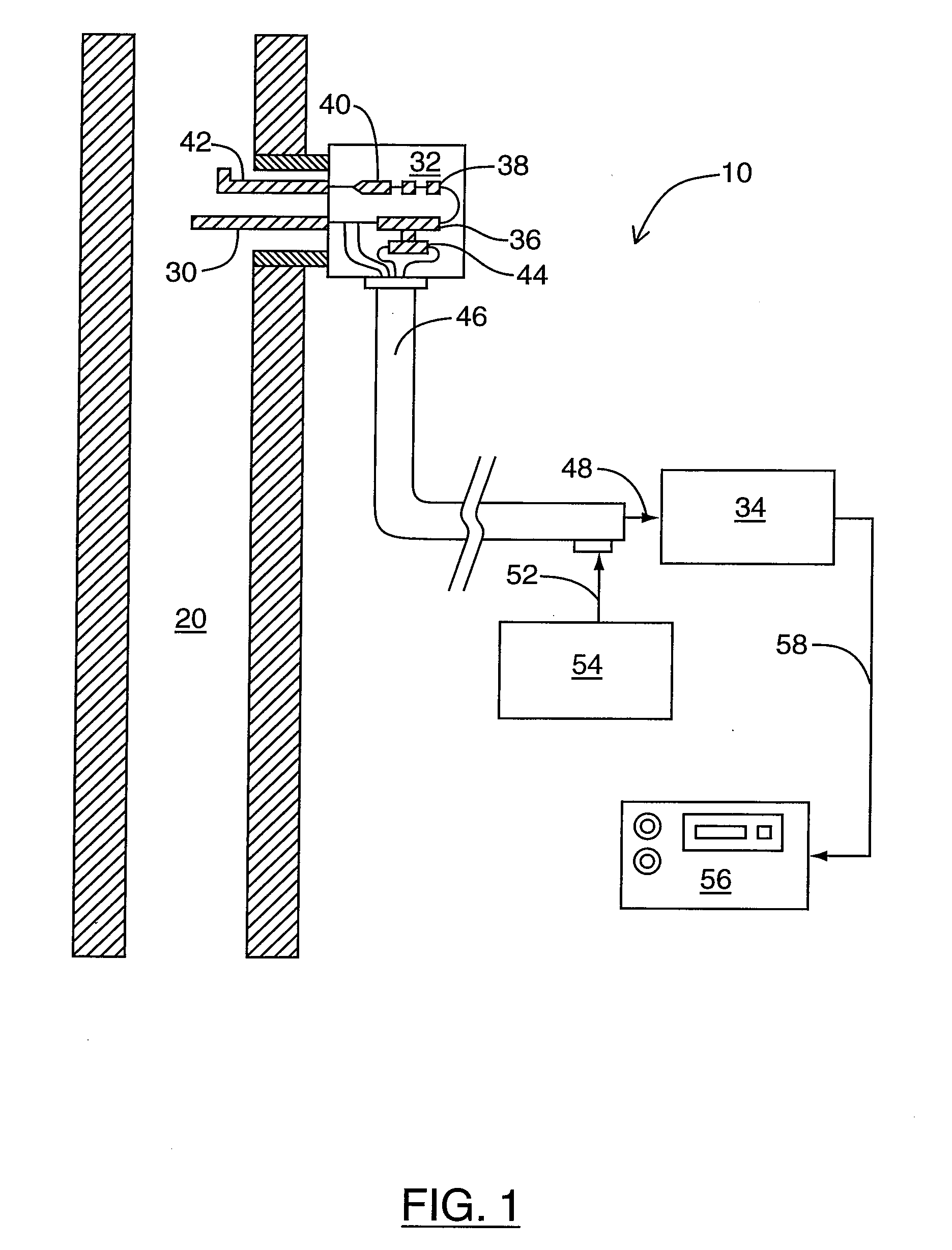Conditioning system and method for use in the measurement of mercury in gaseous emissions
a technology of mercury gaseous emission and conditioning system, which is applied in the direction of manufacturing converters, blast furnace components, blast furnaces, etc., can solve the problems of high maintenance, less useful in monitoring mercury in power plant emissions where greater sensitivity is required, and difficulty in detecting mercury in gaseous emissions, so as to facilitate prompt and efficient removal of offending gases, prevent recombination, and improve the design of pyrolysis machines
- Summary
- Abstract
- Description
- Claims
- Application Information
AI Technical Summary
Benefits of technology
Problems solved by technology
Method used
Image
Examples
Embodiment Construction
[0029]At least some embodiments of the invention relate generally to a system for monitoring mercury in gaseous emissions, comprising: a sampling probe for sampling the emissions; a conditioning module coupled to the sampling probe, which may be adapted to speciate mercury in the emissions, the conditioning module adapted for coupling to a mercury analyzer; a calibration module coupled to the sampling probe; and a controller coupled to the conditioning module and the calibration module. The conditioning module comprises a thermal converter and, in some embodiments, one or more scrubbing units. The thermal converter comprises one or more pyrolyzer units, wherein at least one of the pyrolyzer units comprises material composed of silicon carbide, silicon nitride, silicon boride, boron nitride, and / or other similar covalently bound material. At least one of the scrubbing units may comprise a coalescing filter used as an interference scrubber and gas / liquid separator. At least one of the...
PUM
| Property | Measurement | Unit |
|---|---|---|
| temperature | aaaaa | aaaaa |
| hydrophobic | aaaaa | aaaaa |
| atomic fluorescence | aaaaa | aaaaa |
Abstract
Description
Claims
Application Information
 Login to View More
Login to View More - R&D
- Intellectual Property
- Life Sciences
- Materials
- Tech Scout
- Unparalleled Data Quality
- Higher Quality Content
- 60% Fewer Hallucinations
Browse by: Latest US Patents, China's latest patents, Technical Efficacy Thesaurus, Application Domain, Technology Topic, Popular Technical Reports.
© 2025 PatSnap. All rights reserved.Legal|Privacy policy|Modern Slavery Act Transparency Statement|Sitemap|About US| Contact US: help@patsnap.com



